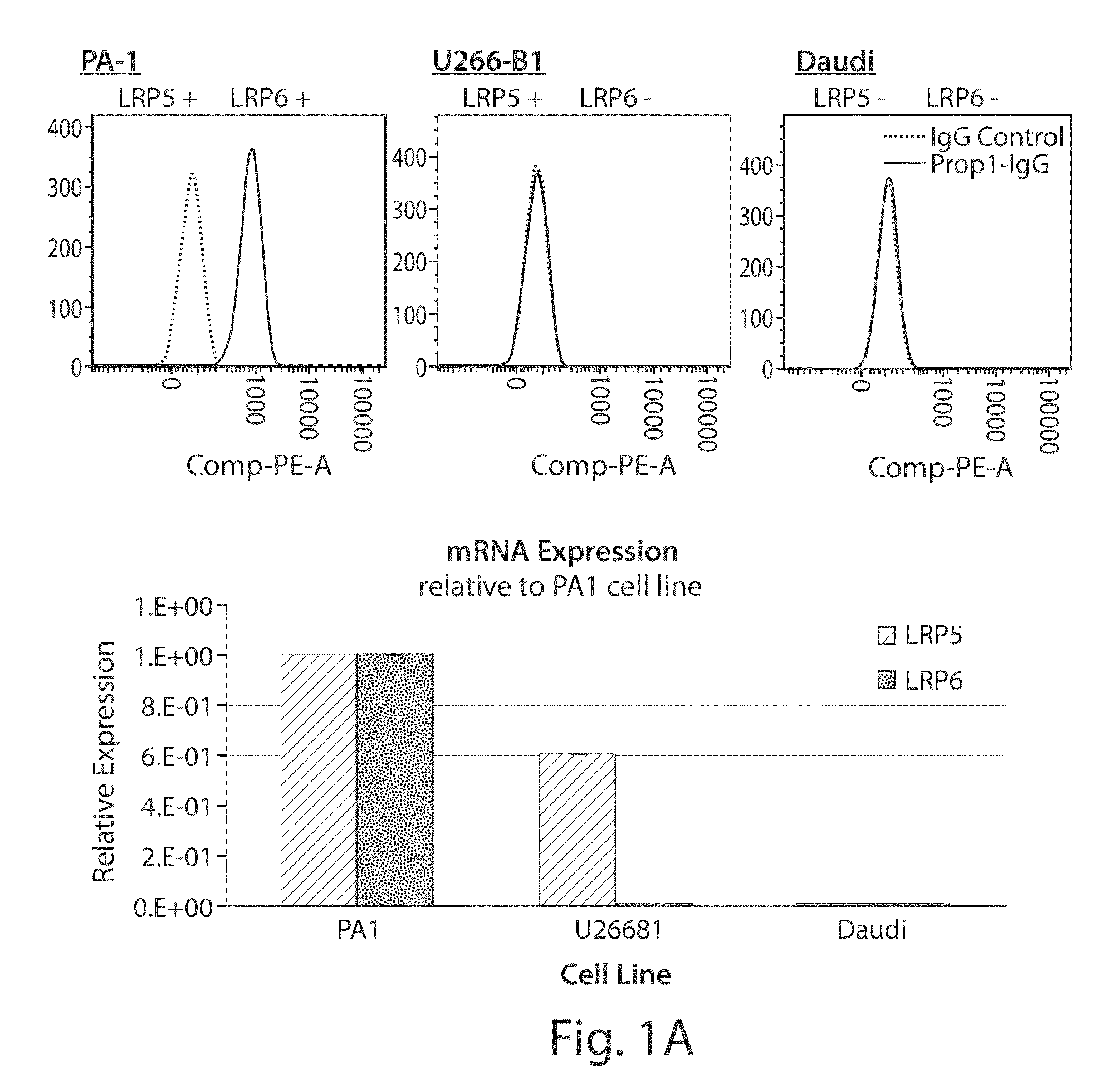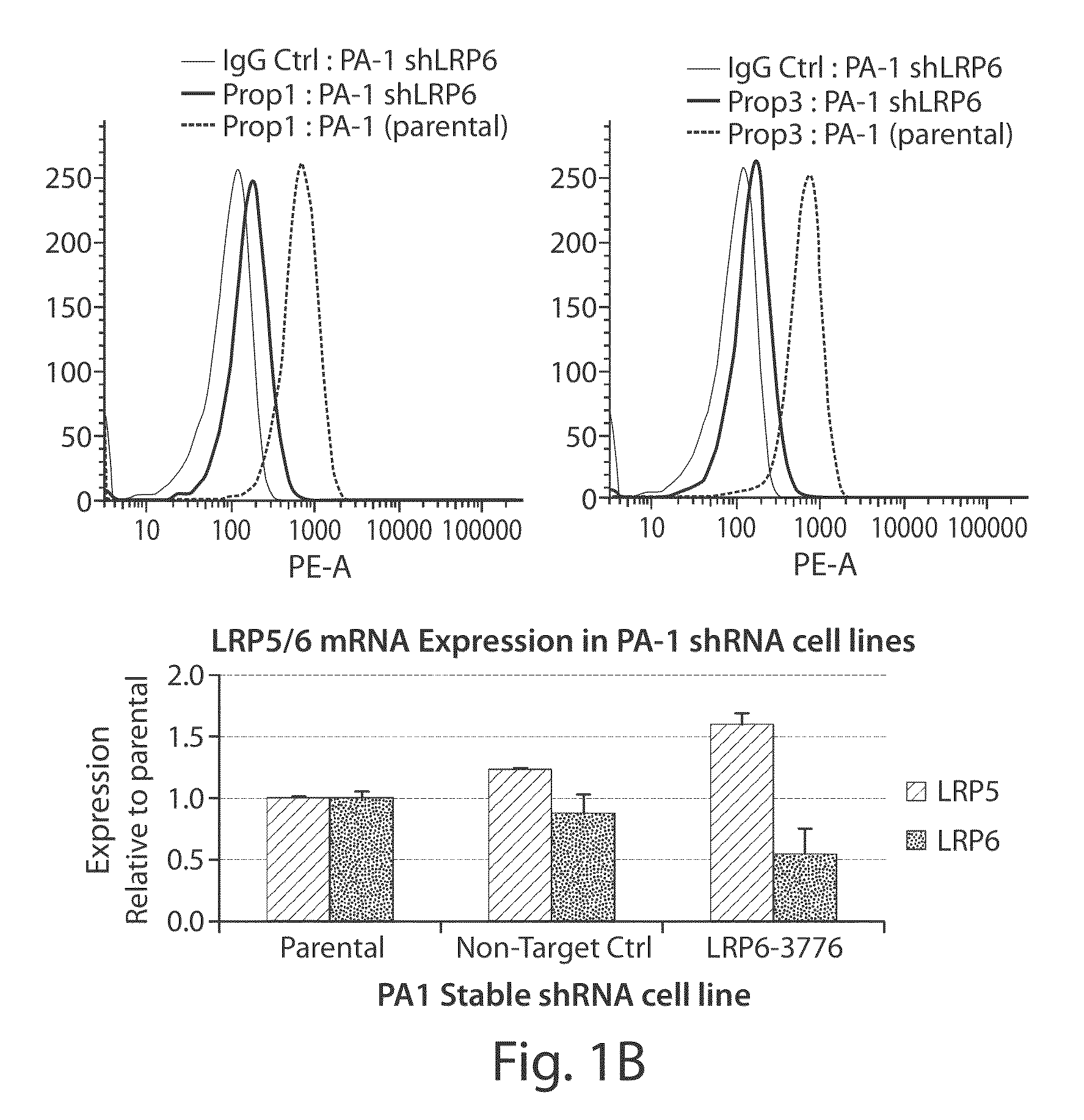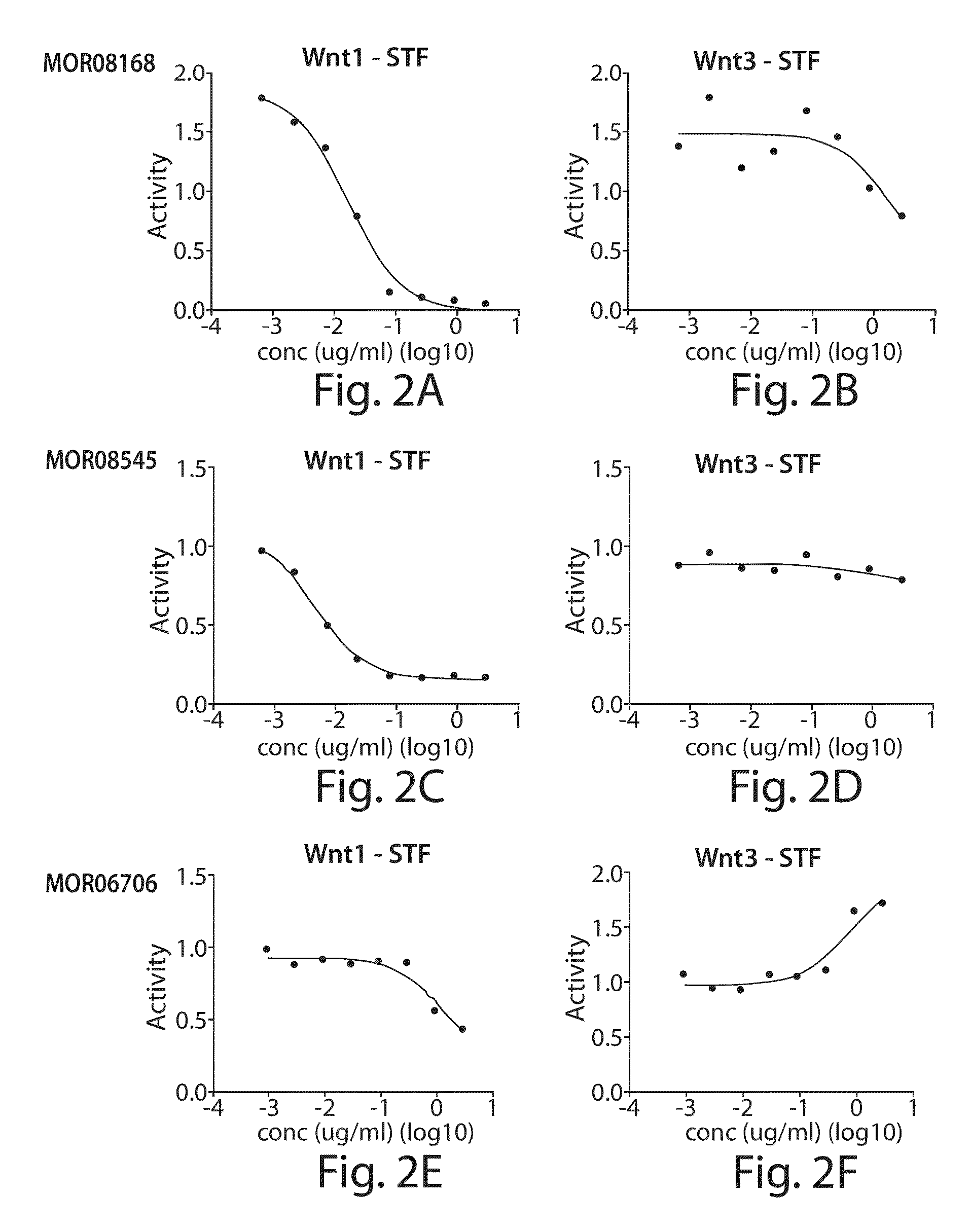Therapeutic low density lipoprotein-related protein 6 (LRP6) multivalent antibodies
a lipoprotein-related protein, multi-valent technology, applied in the field of multi-valent antibodies, can solve the problems of difficult to produce antibodies in sufficient quantity and quality for clinical studies, traditional methods, chemical conjugation,
- Summary
- Abstract
- Description
- Claims
- Application Information
AI Technical Summary
Benefits of technology
Problems solved by technology
Method used
Image
Examples
example 1
Specific Binding of Anti-LRP6 Antibodies to Endogenous LRP6 by FACS
[0477]Detection of endogenous cell surface expression of LRP6 was examined on a number of tumor cells using the anti-LRP6 antibodies and FACS analysis. As shown in FIG. 1A, PA1 cells express both LRP5 and LRP6 mRNA, while U266 and Daudi cells do not express LRP6 mRNA. PA1 cells, but not U266 and Daudi cells, show significant staining with a Propeller 1 anti-LRP6 IgG. More importantly, U266 cells are not stained by anti-LRP6 antibody, although they express LRP6, demonstrating the specificity of anti-LRP6 antibody. Furthermore, anti-LRP6 antibody staining of PA1 cells is significantly reduced upon depletion of endogenous LRP6 using LRP6 shRNA, further demonstrating the specificity of the LRP6 antibody.
[0478]In additional studies, knockdown of LRP6 by shRNA in PA1 cells further confirms specificity of Prop1 and Prop3 antibodies for LRP6 (See FIG. 1B). Knockdown was achieved by infecting cells with lentivirus encoding sh...
example 2
Differential Inhibition of Wnt1 and Wnt3a Reporter Gene Assays by Propeller 1 and Propeller 3 Anti-LRP6 Fabs
[0479]Different anti-LRP6 Fabs were tested in in vitro Wnt reporter assays. Wnt1 or Wnt3A ligands were transiently expressed in HEK293T / 17 STF cells (gene reporter assay) and treated with varying concentrations of anti-LRP6 Fab fragments. STF assays were conducted using the protocols described by Huang et al. (2009), Nature; 461:614-20. Epub 2009 Sep. 16. As seen in FIG. 2A, Propeller 1 anti-LRP6 Fabs (MOR08168, MOR08545, MOR06706) specifically reduced Wnt1-dependent signaling without much effect on Wnt3A-dependent signaling. Conversely as shown in FIG. 2B, Propeller 3 anti-LRP6 Fabs (MOR06475, MOR08193, MOR08473) specifically reduced Wnt3A-dependent signaling without significant effects on Wnt1-dependent Wnt1-dependent signaling. The results demonstrate that Wnt1 and Wnt3A activities are blocked separately by different LRP6 Fab fragment (epitopes).
example 3
Binding of Anti-LRP6 Antibodies to LRP6 of Different Species
[0480]To show cross-reactivity, cells expressing endogenous LRP6 of human (HEK293T / 17) and mouse origin (NIH 3T3), or transiently transfected HEK293 / T17 cells expressing cynomolgus LRP6, were treated and subjected to flow cytometry as described above. FIG. 3 summarizes the results of the findings of the results and show that all anti-LRP6 antibodies bind to human, mouse, and cynomologus LRP6.
PUM
| Property | Measurement | Unit |
|---|---|---|
| density | aaaaa | aaaaa |
Abstract
Description
Claims
Application Information
 Login to View More
Login to View More - R&D
- Intellectual Property
- Life Sciences
- Materials
- Tech Scout
- Unparalleled Data Quality
- Higher Quality Content
- 60% Fewer Hallucinations
Browse by: Latest US Patents, China's latest patents, Technical Efficacy Thesaurus, Application Domain, Technology Topic, Popular Technical Reports.
© 2025 PatSnap. All rights reserved.Legal|Privacy policy|Modern Slavery Act Transparency Statement|Sitemap|About US| Contact US: help@patsnap.com



